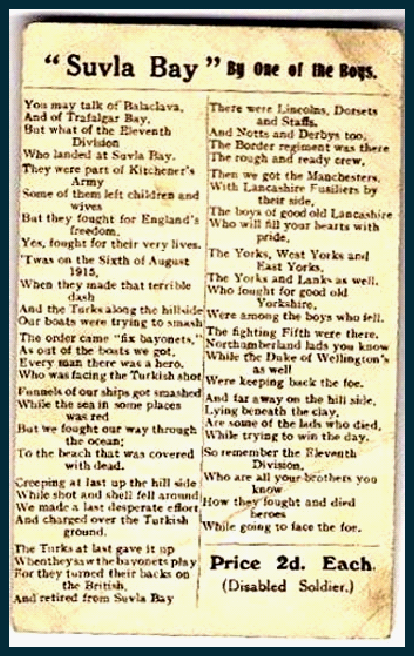Copyright © All rights reserved.



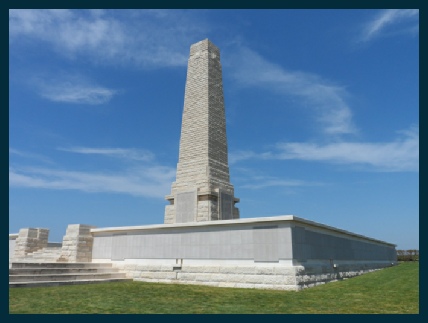
Albert Craven
Albert Victor Craven was born in the first quarter of 1888 and his birth registered in the Malton area. He was the third son of William and Margaret (nee Dickinson) Craven who married in the Malton area in the last quarter of 1877. In 1891 William , who worked as a Train guard, and Margaret were living in Greengate South in Malton with four children.
1891 Census – resident at Greengate South, Old Malton
CRAVEN, William, Head, Married, M, 38, Railway Goods Guard, Malton, Yorkshire,
CRAVEN, Margaret, Wife, Married, F, 37, , Norton, Yorkshire,
CRAVEN, George, Son, , M, 9, Scholar, Malton, Yorkshire,
CRAVEN, Fred, Son, , M, 8, Scholar, Malton, Yorkshire,
CRAVEN, Ellen, Daughter, , F, 5, Scholar, Malton, Yorkshire,
CRAVEN, Albert V, Son, , M, 3, , Malton, Yorkshire,
By 1901 they were still in Greengate having moved to number 74.
1901 Census – resident at 74 Greengate, Malton
CRAVEN, William, Head, Married, M, 47, Railway Goods Guard, Malton, Yorkshire,
CRAVEN, Margarett, Wife, Married, F, 48, , Norton, Yorkshire,
CRAVEN, George, Son, Single, M, 19, Railway Foreman, Malton, Yorkshire,
CRAVEN, Fred, Son, Single, M, 18, Railway Clerk, Malton, Yorkshire,
CRAVEN, Nelly, Daughter, Single, F, 15, , Malton, Yorkshire,
CRAVEN, Albert Victor, Son, Single, M, 13, , Malton, Yorkshire,
FLETCHER, Frank, Boarder, Single, M, 43, Hotel Waiter, Malton, Yorkshire,
In the first quarter of 1911 Albert married Mary Ralston in the York area and by April he had enlisted in the 2nd Battalion of the Yorkshire Regiment and was at Strensall Barracks.
1911 Census – resident at Military Huts Or Barracks Strensall Camp: Private Bn A P W O Yorkshire Regiment
CRAVEN, Albert Victor, , Married, ?, 23, 1888, Soldier, Malton Yorkshire
In the second quarter of 1912 Albert and Mary had a daughter, Margaret.
At the time of the outbreak of war, the 2nd Battalion was serving in Guernsey and returned to Southampton on 28th August, two days after the formation of the 6th Battalion at Richmond and Albert must have been transferred fairly quickly to the 6th as the 2nd Battalion left for Flanders in October. Albert however went with the 6th Battalion to the Dardanelles, sailing from Liverpool on 3 July 1915, going via Egypt, to Mudros on the island of Lemnos before leaving for Gallipoli on the 28th. The landing at Suvla Bay on 6th August was an amphibious landing made at Suvla on the Aegean coast of Gallipoli peninsula in the Ottoman Empire as part of the August Offensive, the final British attempt to break the deadlock of the Battle of Gallipoli. The landing was intended to support a breakout from the Anzac sector, five miles (8 km) to the south.
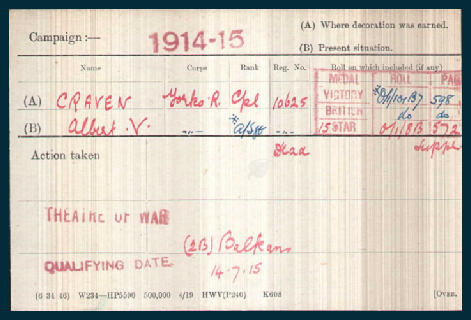
Despite facing light opposition, the landing at Suvla was mismanaged from the outset and quickly reached the same stalemate conditions that prevailed on the Anzac and Helles fronts. On 15 August, after a week of indecision and inactivity, the British commander at Suvla, Lieutenant-
The Suvla landing was to be made by the newly formed British IX Corps, initially comprising two brigades of the 10th (Irish) Division and the entire 11th (Northern) Division. Command of IX Corps was given to Lieutenant-
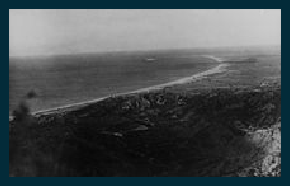
The offensive was to open on 6 August 1915 with diversions at Helles (the Battle of Krithia Vineyard) and Anzac (the Battle of Lone Pine). The landing at Suvla was to commence at 10:00 pm, an hour after the two assaulting columns had broken out of Anzac heading for the Sari Bair heights. The original plan at Suvla was to put the 11th Division ashore south of Nibrunesi Point, as it was not considered safe to land in the dark within the bay itself where there were uncharted shoals. The 30th and 31st Brigades of the 10th Division would land the following morning. The objective of IX Corps was to seize the ring of hills that surrounded the Suvla plain. IX Corps was supplied with purpose-
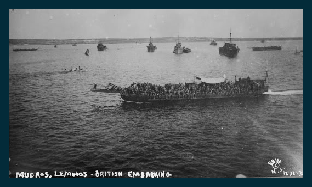
When 20,000 British began landing at Suvla, they were opposed by only 1,500 Ottoman soldiers. The 32nd and 33rd Brigades of the 11th Division began to come ashore at "B Beach" south of Nibrunesi Point shortly before 10 pm. The troops landing on B beach had a long march to Yilghin Burnu via the cut and Hill 10. They also went around the salt lake. This route was apparently to help the inexperienced troops of the Div as Yilghin Burnu was supposed to be heavily fortified. This meant further to march but a theoretically easier attack at the end .
In the first action fought by a New Army unit, two companies from the 6th Battalion, The Yorkshire Regiment, drove the Ottoman defenders off the small hillock of Lala Baba which overlooked the beach. In order not to alert the Turks inland, fighting was with bayonets only! Many officers and men became casualties and once the Hill was taken, the men could not fire at the retreating Turks. It was an inauspicious start; all but two of the Yorkshires' officers became casualties as did one third of the men. Lala Baba was renamed York Hill in recognition of the attack.
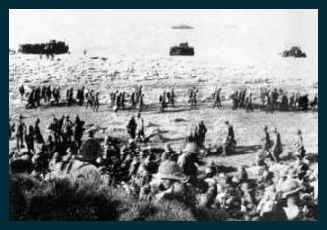
Shortly afterwards the 34th Brigade attempted to land at "A Beach" within Suvla Bay but the landing went awry from the start. The destroyers conveying the brigade anchored 1,000 yards (910 m) too far south, facing shoal water and on the wrong side of the channel that drained the salt lake into the bay. Two lighters grounded on reefs and the men had to wade ashore submerged up to their necks. The 9th Battalion Lancashire Fusiliers waded ashore in darkness and were pinned down between the beach and the salt lake by sniper fire and shelling. The CO was shot in the head around dawn and 9th Battalion lost 6 other officers killed and 7 wounded. The 11th Battalion, The Manchester Regiment, having come ashore from the destroyer HMS Grampus, had the greatest success of the landing, managing to find its way to the Kiretch Tepe ridge and fight its way some distance along it to the east for the loss of 200 casualties.
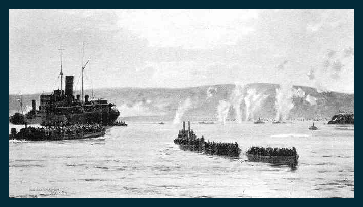
Elsewhere the landing was in chaos, having been made in pitch darkness which resulted in great confusion with units becoming mixed and officers unable to locate their position or their objectives. Later, when the moon rose, the British troops became targets for Ottoman snipers. Attempts to capture Hill 10 failed because no one in the field knew where Hill 10 was. Shortly after dawn it was found and taken, the Ottoman rearguard having withdrawn during the night.
The British official history was blunt in its assessment; "It was now broad daylight and the situation in Suvla Bay was verging on chaos."
Progress on 7 August was minimal. The two brigades of the 10th Division came ashore, adding to the confusion. In the heat of the day, the soldiers became desperate for drinking water. Towards evening two hills east of the salt lake were captured; these represented the sole gains for the first day ashore at Suvla. IX Corps had suffered 1,700 casualties in the first 24 hours. Among the victims of this bloodbath was Albert Craven, killed in action.
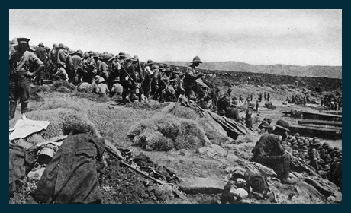
Stopford did not go ashore from the Jonquil on 7 August. By the end of the day, the chain of command had completely broken down and yet Stopford was satisfied with the results of the first day. On the morning of 8 August, he signalled Hamilton: "Major-
Sir Ian Hamilton had watched the battle and wrote in his diary: "My heart has grown tough amidst the struggles of the peninsula but the misery of this scene wellnigh broke it... Words are of no use."
The intensity of the fighting escalated at Suvla on 9 August but the opportunity for the British to make a swift advance had now disappeared. Around midday the gunfire set scrub alight on Scimitar Hill, and Ashmead-
General Stopford is blamed for the failure of the Suvla operation but responsibility ultimately lay with Lord Kitchener who, as Secretary of State for War, had appointed the elderly and inexperienced general to an active corps command, and with Hamilton who accepted Stopford's appointment and then failed to impose his will on his subordinate.
Albert Craven has no known grave and is commemorated on the Helles Memorial, which serves the dual function of Commonwealth battle memorial for the whole Gallipoli campaign and place of commemoration for many of those Commonwealth servicemen who died there and have no known grave. Albert is commemorated in St Leonard's church and on the Town Memorial.
After Albert’s death, Mary remarried – to John Newcombe in York in the second quarter of 1917
